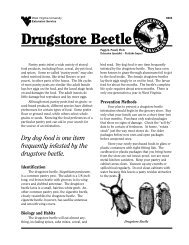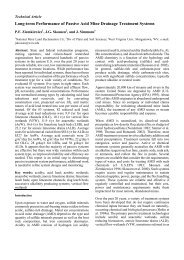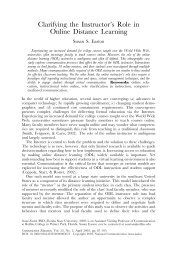Rediscover Forgotten Root Crops - West Virginia University
Rediscover Forgotten Root Crops - West Virginia University
Rediscover Forgotten Root Crops - West Virginia University
You also want an ePaper? Increase the reach of your titles
YUMPU automatically turns print PDFs into web optimized ePapers that Google loves.
Crop<br />
Celeriac<br />
Horseradish<br />
Parsnip<br />
Rutabaga<br />
Salsify<br />
Turnip<br />
Leek<br />
Seed/Plants<br />
per 10’ of Row<br />
20-30 plants<br />
5 sets<br />
1 packet<br />
1/8 packet<br />
1/3 packet<br />
1/8 packet<br />
1/2 packet<br />
Spacing in<br />
Row (inches)<br />
Celeriac<br />
Celeriac is a variant of the common celery.<br />
It is also known as knob celery or turnip-rooted<br />
celery because of the large turnip-like swelling<br />
at the base of the plant. This bulbous base, which<br />
grows to 4 inches in diameter, is the commonly<br />
eaten part of the plant.<br />
Celeriac is a member of the parsley family, which<br />
includes carrots, celery, parsnips, and dill. It was<br />
used by the Egyptians, Greeks, and Romans for<br />
religious purposes. It was used in the Middle Ages<br />
primarily as a vegetable plant and is popular today<br />
with Europeans who eat it raw in salads or cooked<br />
in soups or stews.<br />
Few gardeners try this root crop because of its<br />
long growing season. It is best to use transplants<br />
started indoors 10 weeks before planting time. Such<br />
varieties as Giant Prague and Monarch are typically<br />
grown. Because celeriac is a heavy feeder, two or<br />
more applications of fertilizer during the growing<br />
season are recommended. Side shoots and withered<br />
leaves should be removed when they appear. Plants<br />
can be blanched by slightly hilling them about two<br />
weeks before harvest.<br />
Celeriac will attain its best flavor after the first<br />
frost. It may be left in the garden to be harvested as<br />
needed or pulled and stored in a cool place for up to<br />
six months. The root should be peeled before use. It<br />
can be eaten raw, but it is often cooked like potatoes.<br />
4-6<br />
24<br />
3-6<br />
5-8<br />
2-4<br />
2-6<br />
4<br />
Spacing Between<br />
Rows (inches)<br />
24-30<br />
30<br />
18-30<br />
18-36<br />
18-30<br />
12-30<br />
24<br />
Planting<br />
Depth<br />
NA<br />
3-5<br />
When to<br />
Plant<br />
Early spring<br />
Spring<br />
Early spring<br />
Midsummer<br />
Early spring<br />
Early spring<br />
& late<br />
summer<br />
Seeds in late<br />
March or<br />
transplants<br />
in April<br />
WVU Extension Service Families and Health Programs<br />
1/2<br />
1/4-1/2<br />
1/2-1<br />
1/2<br />
1/4<br />
Days to<br />
Maturity<br />
100-110 or<br />
56-84 for<br />
transplants<br />
180<br />
100-130<br />
390-95<br />
150-155<br />
45-75<br />
100-120<br />
Yield per<br />
10’ Row<br />
6 lbs.<br />
3-7 lbs.<br />
10-12 lbs.<br />
8-10 lbs.<br />
10 lbs.<br />
10 lbs.<br />
6-7 lbs.<br />
Harvest<br />
Duration<br />
3-6 weeks<br />
1-2 months<br />
3-4 months<br />
1-2 months<br />
1-2 months<br />
2-3 weeks<br />
Late fall<br />
to early<br />
spring<br />
Horseradish<br />
Horseradish is a hardy perennial plant of the<br />
Brassicaceae family (formerly Cruciferae), which<br />
includes mustard and cabbages.<br />
Horseradish probably originated in southeastern<br />
Europe and western Asia. It has been used by the<br />
Egyptians and<br />
Greeks for more<br />
than 3,500 years.<br />
Both the root and<br />
leaves were used<br />
for medicinal<br />
purposes during<br />
the Middle Ages.<br />
It is commonly<br />
used today as a<br />
pungent condiment.<br />
<strong>Root</strong> cuttings<br />
called “sets” are<br />
used to produce<br />
horseradish.<br />
These slender<br />
8- to 14-inch roots<br />
are planted in the early spring in furrows 3 to 5<br />
inches deep. The sets are laid 18 to 24 inches apart,<br />
with the head (large end) slightly elevated and<br />
2 to 3 inches below the soil surface. The plants will<br />
grow 2 to 2-1/2 feet high, and the roots will make<br />
their best growth in early fall. Typical varieties are<br />
Maliner Kren, Big Top, and Hybrid Horseradish.










